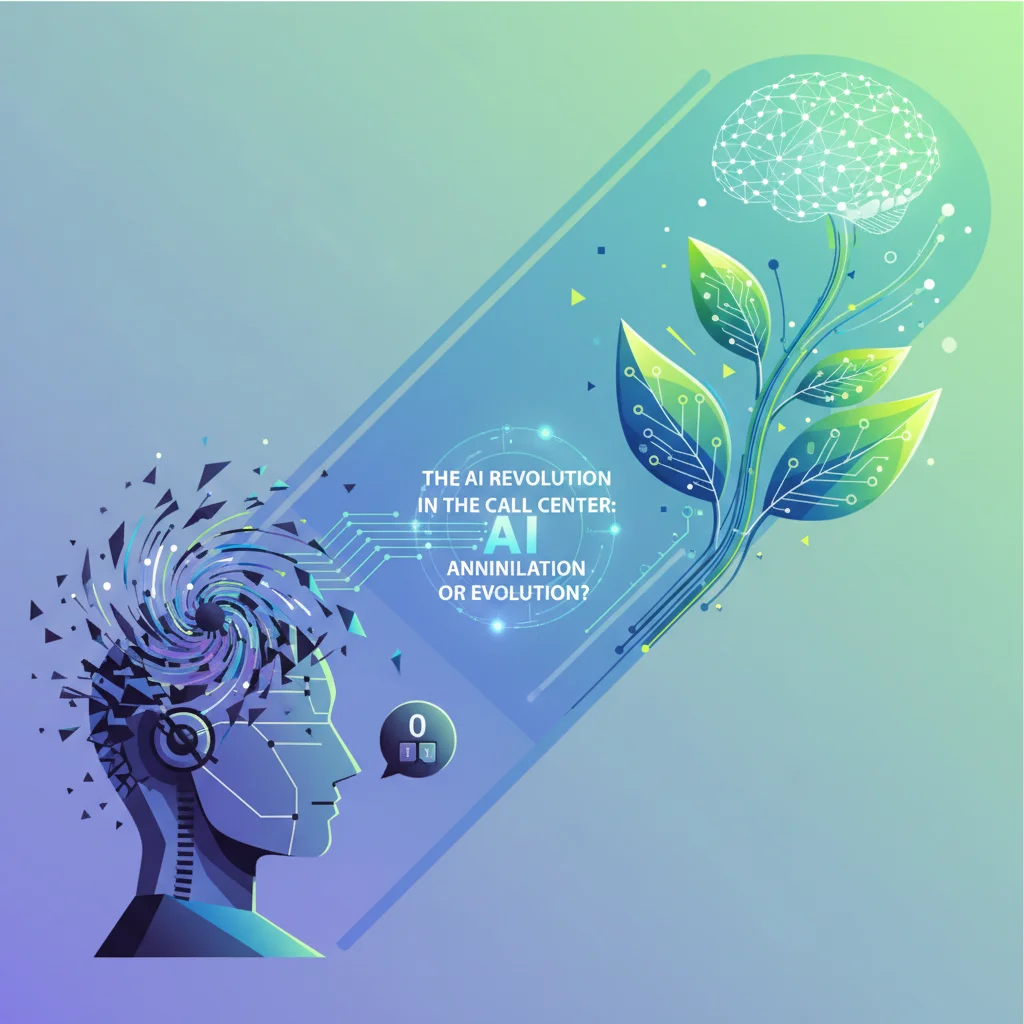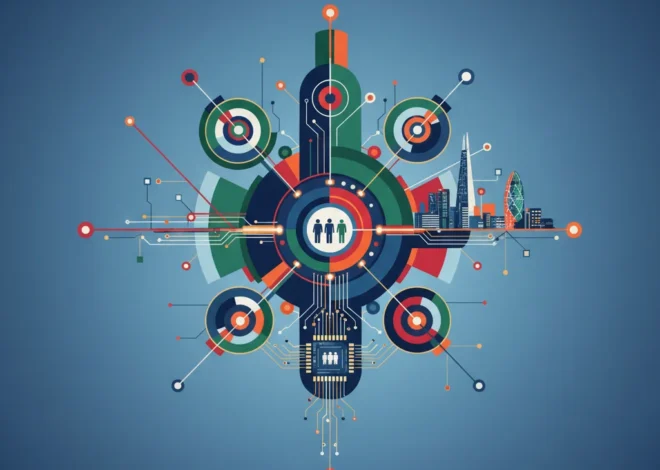
The AI Revolution in the Call Center: Annihilation or Evolution?
We’ve all been there. Trapped in the automated labyrinth of a customer service line, desperately pressing “0” to reach a human, all while a robotic voice insists, “Your call is very important to us.” For decades, this has been the frustrating face of automated customer support. But now, a new wave of technology is washing over the industry, and it’s far more powerful than the clunky systems of the past.
Some commentators, like those in a recent BBC News report, are asking a provocative question: Is artificial intelligence about to make human-staffed call centers obsolete? The fear is palpable. Headlines predict mass job displacement, and for the millions employed in customer support, the rise of AI can feel like a looming threat.
But is it really about annihilation, or are we on the cusp of a profound evolution? The truth is far more nuanced and, for those willing to adapt, far more exciting. The integration of sophisticated artificial intelligence and machine learning isn’t just about replacing humans with bots. It’s about fundamentally redesigning the entire customer experience, transforming the role of the human agent from a script-reading operator into a high-value problem solver. Let’s unplug from the hype and dial into what’s really happening.
From “Press One” to “How Can I Help?”: A Brief History of Customer Service Automation
To understand why the current AI shift is so monumental, we need to look back. The dream of automating customer interactions is not new. It began with Interactive Voice Response (IVR) systems in the 1970s and 80s. These decision-tree-based systems were a landmark in innovation at the time, but they were rigid and often led to customer frustration.
Then came the first generation of chatbots in the 2000s and 2010s. Powered by simple keyword matching and pre-written scripts, they could handle basic FAQs but crumbled at the first sign of complexity or a typo. They were a step forward, but they lacked the one thing that defines good service: understanding.
The key difference today lies in the power of generative AI and Large Language Models (LLMs). Unlike their predecessors, these systems don’t just match keywords; they comprehend context, intent, and sentiment. This leap in capability, powered by scalable cloud infrastructure and delivered through accessible SaaS (Software as a Service) platforms, is what’s fueling the current revolution.
The AI Co-Pilot: Augmentation, Not Just Automation
The most transformative application of AI in the modern call center isn’t about getting rid of human agents, but about making them superhuman. Think of AI as a co-pilot, handling the mundane, repetitive tasks so the human pilot can focus on navigating complex challenges. According to a Gartner report, conversational AI is projected to reduce contact center agent labor costs by a staggering $80 billion by 2026, but much of this saving comes from increased efficiency, not just headcount reduction.
Here’s a breakdown of how this human-AI collaboration works in practice:
| Task Category | AI’s Role (The Co-Pilot) | Human Agent’s Role (The Pilot) |
|---|---|---|
| Tier 1 Support (e.g., password resets, order status) | Full, 24/7 automation via intelligent chatbots and voicebots that can handle multi-turn conversations and resolve issues instantly. | Oversight and handling escalations. Analyzing AI interaction data to improve automated workflows. |
| Information Retrieval | Listens to the conversation in real-time and instantly surfaces the right knowledge base articles, customer history, and troubleshooting steps on the agent’s screen. | Uses the AI-provided information to have a more informed, efficient, and accurate conversation with the customer. No more “please hold while I look that up.” |
| Post-Call Work | Automatically generates a concise, accurate summary of the call, categorizes the issue, and updates the CRM. | Reviews and approves the AI-generated summary with a single click, saving several minutes per call and eliminating manual data entry errors. |
| Complex/Emotional Issues | Performs real-time sentiment analysis, alerting the agent to rising customer frustration and suggesting de-escalation tactics. | Focuses 100% on active listening, empathy, and complex problem-solving, using emotional intelligence to save a valuable customer relationship. |
This hybrid model allows companies to achieve unprecedented efficiency while simultaneously elevating the quality of human interaction. The result? Faster resolutions for simple issues and more meaningful, expert-led support for complex ones. It’s a win-win that can lead to significant gains in customer satisfaction—in some cases, by as much as 30-45% (source).
The Economy's Green Light: Why Cooling Inflation is Fueling a Tech and AI Revolution
The Call Center Agent of 2030: New Roles, New Skills
The role of a “call center agent” is being rewritten. The repetitive, low-skill tasks are disappearing, making way for more dynamic, technically-oriented, and emotionally intelligent roles. The future of the contact center workforce will be smaller, but significantly more skilled and better compensated.
Here’s a look at the evolution of the customer support professional:
| The Past: The Operator | The Future: The Specialist |
|---|---|
| Primary Skill: Following a script, speed, and basic data entry. | Primary Skill: Complex problem-solving, empathy, and technical acumen. |
| Core Task: Answering repetitive questions and routing calls. | Core Task: Handling high-stakes escalations, managing AI systems, and building customer relationships. |
| Tools Used: Phone, a basic CRM. | Tools Used: AI-powered dashboards, low-code programming tools to tweak bot behavior, advanced analytics platforms. |
| Job Titles: Call Center Rep, Customer Service Agent. | Job Titles: AI Interaction Supervisor, Conversation Designer, Empathy Specialist, Product Expert. |
This transition demands a massive focus on upskilling and reskilling. Employees will need training not just in new software, but in critical thinking, data analysis, and emotional intelligence. The agent of the future might spend part of their day handling a critical customer issue and the other part “training” the AI by reviewing conversation transcripts and refining its responses.
Beyond the Ticker: 3 Unlikely Case Studies on Tech Innovation & Market Trends
The Double-Edged Sword: Opportunities & Risks for Businesses
For entrepreneurs and startups, this technological shift presents incredible opportunities. A small team can now offer 24/7, multi-lingual support that was once the exclusive domain of massive corporations. AI-powered SaaS platforms provide a powerful, scalable, and cost-effective way to manage customer interactions from day one.
However, the path is also fraught with peril. An over-reliance on automation can create a cold, impersonal customer experience that drives customers away. A poorly configured AI can frustrate users more than a traditional IVR system ever could.
Furthermore, the cybersecurity implications are significant. When an AI has access to vast amounts of sensitive customer data, it becomes a prime target for attack. Ensuring the security and privacy of that data, and protecting the AI models themselves from manipulation, is a critical challenge that requires robust security protocols and constant vigilance.
The Ethical Tightrope: Bias, Empathy, and the Uncanny Valley
Beyond the technical and business challenges lies a complex ethical landscape. AI models are trained on vast datasets of human conversations, and if that data contains biases, the AI will learn and perpetuate them. An AI could inadvertently offer different levels of service based on a customer’s dialect, word choice, or perceived demographic.
Then there’s the question of empathy. Modern AI can be trained to mimic empathetic language, but it doesn’t *feel* empathy. This can lead to an “uncanny valley” experience where a customer feels they are talking to a human, only to be jarringly reminded by an out-of-context response that they are not. Navigating this requires careful design and, crucially, transparency with the customer.
Conclusion: A New Conversation
So, will AI mean the end of call centers? The answer is a definitive no. But it does mean the end of the call center as we know it. The era of the human as a simple information conduit is over. The future is a symbiotic partnership between artificial intelligence and human expertise.
AI will handle the predictable, freeing up human agents to do what they do best: connect, empathize, and solve the truly difficult problems. This transformation will be challenging, requiring investment in technology, a commitment to training, and a thoughtful approach to ethics and security. But for businesses that get it right, the reward is a customer service experience that is not only more efficient but also more profoundly human.


